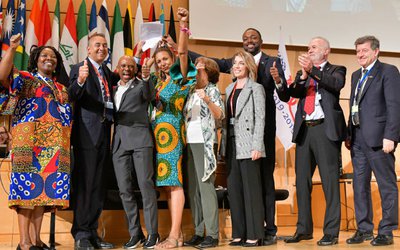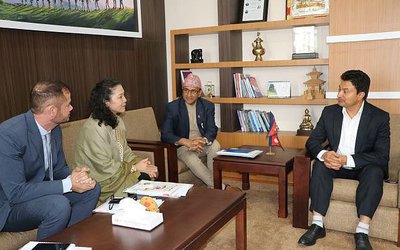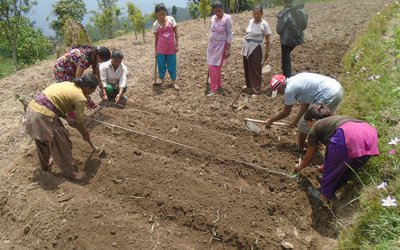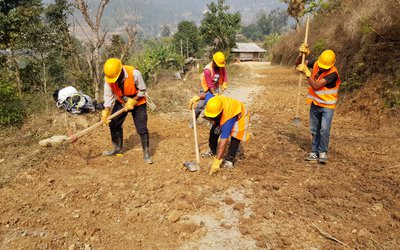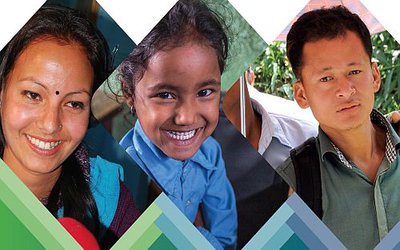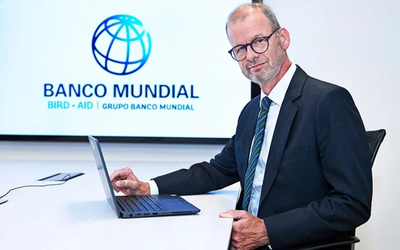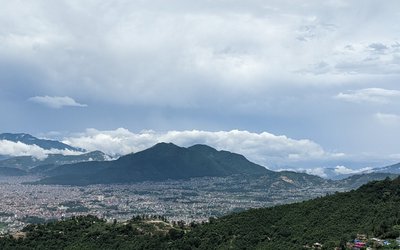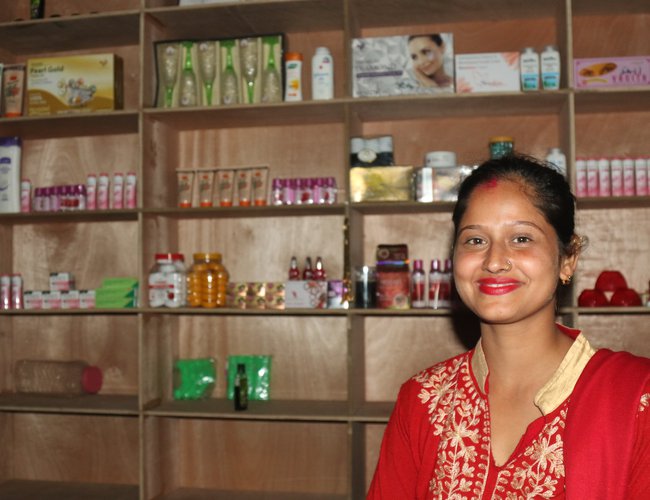
The town of Bhagatpur in Kanchanpur in far western Nepal is typical for its ethnic composition: almost everyone has migrated to this land as a way to overcome bitter poverty, a common phenomenon in Nepal. Life hasn’t come easy for many families but there are promising signs of a better future for skilled youth.
The family of 25 year old Punam Jaisi Nepali faced worse than biting poverty: miserable situations to live together with a family having debt bondage for over a century. She struggled hard to stay a dignified life when she got married to Sanjay Nepali, a former Haliya from Dalit community having nine family members.
In 2008, the government abolished the Haliya system that had forced the poorest and most disadvantaged population to serve landlords without any wage, freedom, or right to mobility. Today, the struggle for improved livelihood continues for Punam’s family and many other neighbours.
“I am a proud owner of this cosmetics and beauty parlor,” said Punam. She thanks Rastriya Haliya Mukta Samaj Federation for providing the opportunity for training and building her confidence. The organization is supported by ILO implemented BRIDGE project, focused on equipping former bonded families with adequate skills for improved livelihood. US Department of Labour has funded the project.
ILO Nepal joined hands with the Ministry of Land Management, Cooperatives and Poverty Alleviation for piloting a model programme of sustainable livelihood to freed-Haliyas in Kanchanpur and Bajura. Through a global Bridge Project, ILO has reached out to 600 Haliyas families in the two districts for implementing a model of sustainable livelihood that intends to enhance their skills and employability based on the need of the local labour market. They are provided skills on 14 different trades, covering both men and women. The case in point that a well tailored training can transform lives is seen from the statistics that 317 youth have joined jobs as skilled wage earners, 246 have started their micro enterprise and 37 are preparing to join the labour market soon.
“The training has transformed me into a promising entrepreneur. On Saturdays, I get as many as 30 customers. The earning is quite satisfactory,” she exclaimed. The National Skill Certificate she received from the Government’s Council for Technical Education and Vocational Training is hung on the wall of her beauty parlor.
“The BRIDGE project has actually come as a bridge for former bonded labourer families to seek a new way of life. This is why we have requested the ILO for its extension in other districts”, demanded Ishwor Sunuwar, President of the Haliya Federation.
Forced labour, modern day slavery and human trafficking are subjects of widespread international concern and action. The International Labour Organization’s two Conventions: the Forced labour, modern day slavery and human trafficking are subjects of widespread international concern and action. The International Labour Organization’s two Conventions: the Forced Labour Convention, 1930 (No. 29) and the Abolition of Forced Labour Convention, 1957 (No. 105) are among its most widely ratified instruments. According to the ILO, an estimated 40.3 million people are in modern slavery, including 24.9 in forced labour.
- MELAMCHI WATER SUPPLY: No Interruption During Monsoon
- Jun 25, 2025
- KOREAN RETURNEES: Successful Integration
- Jun 25, 2025
- UPPER TRISHULI-1: Engaging With Local
- Jun 25, 2025
- IME GROUP: Twenty Five Years Of Journey
- Jun 24, 2025
- NEPAL’S AIR POLLUTION: A Growing Health Concern
- Jun 24, 2025
